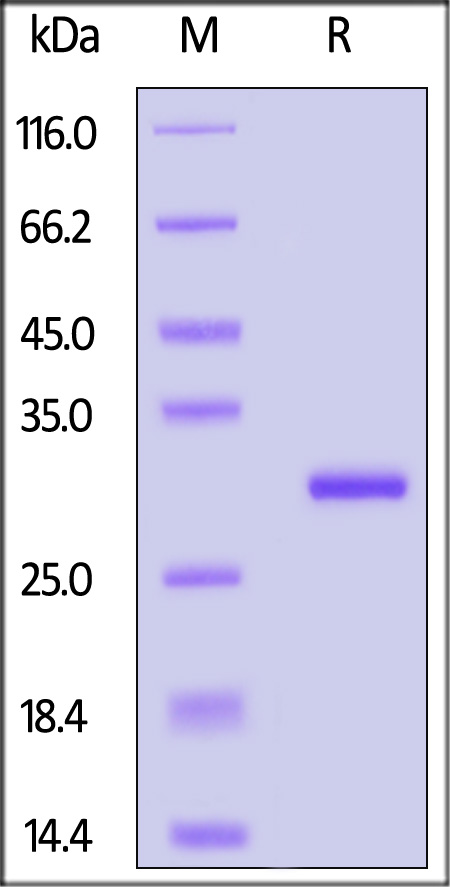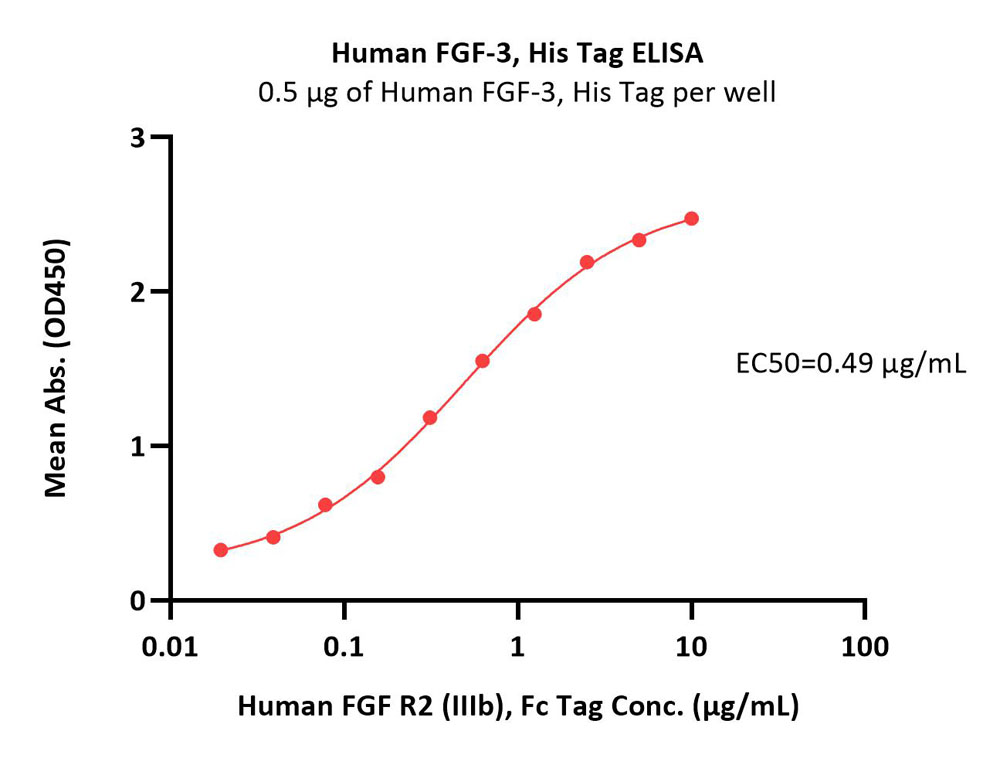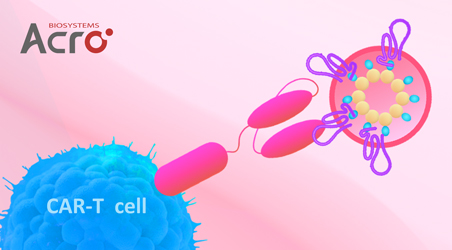分子别名(Synonym)
FGF-3,HBGF-3,Fibroblast growth factor 3
表达区间及表达系统(Source)
Human FGF-3, His Tag (FG3-H51H9) is expressed from E. coli cells. It contains AA Ala 18 - His 239 (Accession # P11487-1).
Predicted N-terminus: Met
Request for sequence
蛋白结构(Molecular Characterization)

This protein carries a polyhistidine tag at the C-terminus.
The protein has a calculated MW of 27.0 kDa. The protein migrates as 30 kDa under reducing (R) condition (SDS-PAGE).
内毒素(Endotoxin)
Less than 1.0 EU per μg by the LAL method.
纯度(Purity)
>95% as determined by SDS-PAGE.
制剂(Formulation)
Lyophilized from 0.22 μm filtered solution in 20 mM Mops,0.2 M Arginine,2 mM TCEP,2 mM EDTA, pH7.3 with trehalose as protectant.
Contact us for customized product form or formulation.
重构方法(Reconstitution)
Please see Certificate of Analysis for specific instructions.
For best performance, we strongly recommend you to follow the reconstitution protocol provided in the CoA.
存储(Storage)
For long term storage, the product should be stored at lyophilized state at -20°C or lower.
Please avoid repeated freeze-thaw cycles.
This product is stable after storage at:
- -20°C to -70°C for 12 months in lyophilized state;
- -70°C for 3 months under sterile conditions after reconstitution.
电泳(SDS-PAGE)

Human FGF-3, His Tag on SDS-PAGE under reducing (R) condition. The gel was stained with Coomassie Blue. The purity of the protein is greater than 95%.
活性(Bioactivity)-ELISA

Immobilized Human FGF-3, His Tag (Cat. No. FG3-H51H9) at 5 μg/mL (100 μL/well) can bind Human FGF R2 (IIIb), Fc Tag (Cat. No. FGB-H5256) with a linear range of 0.02-2.5 μg/mL (Routinely tested).
Protocol
背景(Background)
Fibroblast growth factor 3 (FGF3), belonging to the family of fibroblast growth factors (FGFs), regulates several developmental processes, including brain patterning, branching morphogenesis and limb development, by binding, dimerizing and activating cell surface FGF receptors (FGFRs). FGF/FGFR complexes have been demonstrated to act as driving oncogenes in certain types of cancer to maintain the malignant properties of tumor cells in a cell autonomous manner. According to previous studies, it is speculated that FGF3 is upregulated in breast cancer and accelerates tumor growth and angiogenesis. Consequently, FGF3 has been considered as a potential target for breast cancer therapy.






















































 膜杰作
膜杰作 Star Staining
Star Staining












